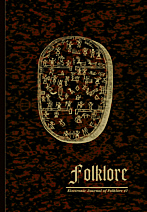The History of Lapland and the Case of the Sami Noaidi Drum Figures Reversed
The History of Lapland and the Case of the Sami Noaidi Drum Figures Reversed
Author(s): Francis JoySubject(s): Anthropology
Published by: Eesti Kirjandusmuuseum
Keywords: divination; errors; figures; illustrations; Lapland; priests; publications; reversed; Sami Noaidi
Summary/Abstract: The Sami are the indigenous peoples of northern Scandinavia and the Kola Peninsula in Russia. Up until the periods between the 17th and 18th centuries the Sami practiced an indigenous form of shamanism, characterised by hunting and animal ceremonialism. After the crusade against the Sami and the practice of their ancient nature religion by the Swedish, Norwegian and Finnish priests and missionary workers, a subsequent number of Noaidi-Shaman drums were collected and in time exhibited in different museums throughout Europe, where many still remain today. The Noaidi drums have been vital sources of information for scholars outside Sami culture, as well as the Sami themselves. In the 1670s, Johannes Schefferus, the German scholar and linguist wrote about the history of Lapland which was translated into Latin under the uniform title Lapponia. English, French and Dutch editions soon followed as did a German edition. This article discusses some of the implications for researchers due to a number of significant errors recently identified in these original manuscripts and furthermore, what this means for the Sami history, religion and culture today?
Journal: Folklore: Electronic Journal of Folklore
- Issue Year: 2011
- Issue No: 47
- Page Range: 113-144
- Page Count: 32
- Language: English

